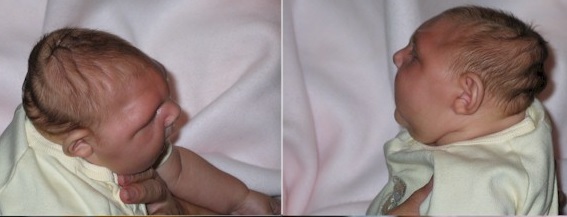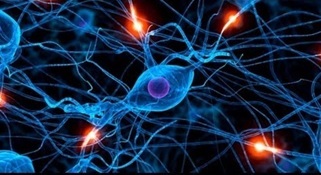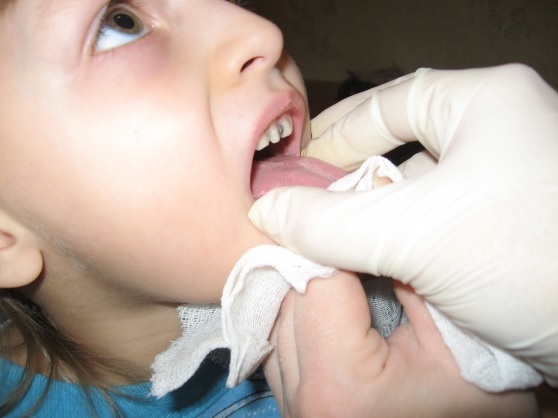Hypoxic-ischemic genesis of the perinatal pathology of the central nervous system
Contents:
- Perinatal pathology of the nervous system of hypoxic origin
- Etiology of hypoxic CNS damage
- Mechanism of development of coronary ischemia of the central nervous system
- Clinical picture of ischemic CNS damage in newborns
- Degrees of cerebral ischemia and their consequences
- I degree
- II degree
- III degree
- Diagnosis of ischemic injury of the central nervous system
- Treatment of cerebral ischemia of newborns
- All of us come from childhood
 The appearance in the family of the child is associated with a number of hassles andfalsities. First of all, young parents, of course, fear for the health of the newborn. So, at the reception of a neurologist with a high degree of probability a baby may have the first diagnosis in his life - hypoxic-ischemic lesion of the central nervous system. What is it, and in what cases is it necessary to sound an alarm?
The appearance in the family of the child is associated with a number of hassles andfalsities. First of all, young parents, of course, fear for the health of the newborn. So, at the reception of a neurologist with a high degree of probability a baby may have the first diagnosis in his life - hypoxic-ischemic lesion of the central nervous system. What is it, and in what cases is it necessary to sound an alarm?
Perinatal pathology of the nervous system of the hypoxic genesis
Perinatal lesion of the central nervous system - a variety of pathological conditions that developed in the period from 22 weeks gestation to 7 days of life of the newborn.
Interesting! Previously, the perinatal period was counted from the 28th week of pregnancy. A child born before that date was considered not viable. However, at the present time, when doctors have learned to take care of newborns with a weight of 500 grams, the perinatal period has shifted to 22 weeks.
Depending on the mechanism of the development of the disease, perinatal pathology may be:
- hypoxic;
- traumatic;
- is dismetabolic;
- is infectious.
In turn, hypoxic damage to the central nervous system manifests itself as ischemia( hypoxic-ischemic forms), and nontraumatic hemorrhages( hypoxic-hemorrhagic lesions cns).Combinations of ischemic and hemorrhagic hypoxic manifestations of perinatal pathology are possible.
Hypoxic-ischemic injury of the nervous tissue is one of the pathogenetic forms of perinatal pathology associated with insufficiency of oxygen supply to cells.
Etiology of hypoxic CNS damage
Hypoxic CNS damage in newborns is determined by the effect on the fetus of a number of harmful factors. They can exert their negative influence during pregnancy, direct labor activity and the first days of a baby's life.
The main reasons for the development of fetal and newborn hypoxia are:
- genetic factors( chromosomal diseases and gene mutations);
- physical factors( environmental pollution, radiation, chronic hypoxia);
- chemical factors( drugs, household and industrial substances, chronic alcohol intoxication);
- alimentary factors( quantitative or qualitative starvation, lack of protein, vitamins and trace elements);
- of the mother( infection, endocrine pathology, women's somatic diseases);
- pathology of pregnancy( gestosis, placental insufficiency, abnormalities of the umbilical cord);
- pathology in labor( prolonged and rapid delivery, weakness of labor, placental abruption, umbilical cord prolapse).
Mechanism of development of coronary ischemia of the central nervous system
Adverse factors provoke a decrease in the saturation of erythrocytes with oxygen and lead to hypoxia. In such conditions, the vascular wall begins to compensate for changes, increasing its permeability for better oxygen supply to tissues. This reduces the pressure in the vessels, and forms ischemia.
On the other hand, under hypoxic conditions, glucose begins to disintegrate to lactic acid. Acidosis is formed with irritation of the nuclei of the vagus nerves and the respiratory center of the medulla oblongata. As a result, intestinal motility activation, meconium outlet and parallel aspiration of the contents of the birth canals and amniotic fluid are provoked in childbirth. This further aggravates hypoxia, more actively forming ischemic lesions of the central nervous system in newborns.
Clinical picture of ischemic involvement of the CNS in newborns
The manifestations of hypoxic-ischemic involvement of the CNS in newborns depend on the degree of damage, the number of ischemic foci and their localization. Neurological syndromes of hypoxic lesions may manifest:
- depletion of CNS functions;
- increased neural reflex excitability;
- hypertension-hydrocephalic syndrome;
- convulsive paroxysms;
- delayed psycho-speech and motor development.
In practice, you can find individual elements or a combination of several syndromes, and it is also possible to move from one clinical manifestation to another.
Important! Many parents mistakenly accept the first manifestations of cerebral ischemia for the characteristics of the baby. If the child is inactive and constantly asleep or, on the contrary, restless and crying a lot, it is necessary to consult a pediatric neurologist.
Degrees of cerebral ischemia and their consequences
 Ischemic forms of CNS involvement in neonates are classified into three degrees depending on the severity of the cerebral pathology:
Ischemic forms of CNS involvement in neonates are classified into three degrees depending on the severity of the cerebral pathology:
- is mild;
- of medium gravity;
- heavy.
I degree
The first degree is mild ischemia. The newborn is characterized by lethargy, which turns into hyperexcitability. In the neurological status there is no gross focal symptomatology. There may be a slight increase in unconditioned reflexes, their spontaneous manifestations are possible.
As a rule, after a few days, the symptomatology is stopped and full recovery is observed. Currently, there is a hyperdiagnosis of lung ischemic lesions of the central nervous system.
This is due to the inability to completely exclude non-aggressive hypoxic-ischemic damage to the nervous tissue. The abundance of risk factors for the disease, the erasure of the clinical picture of cerebral ischemia of the first degree and the absence of its consequences allow the doctor to establish such a diagnosis practically for every newborn.
II degree
Second degree - the average severity of cerebral ischemia is characterized by depression of CNS functions for at least 12 hours. There is asymmetric muscle hypotension, weakness of motor activity, inhibition of reflexes. Seizures are possible. The forecast of this form is not certain. The third degree is severe cerebral ischemia.
III degree
.After birth, the child's state of consciousness is assessed as a stupor or coma, requiring artificial ventilation. Diffuse muscular hypotension, absence of spontaneous motility is noted. Postnatal convulsions often occur. There is hypertensive-hydrocephalic syndrome. The consequences of hypoxic-ischemic lesions of the central nervous system of the third degree are most severe. At survival such children have severe neurological lesions.
Diagnosis of ischemic injury of the central nervous system
The diagnosis of cerebral ischemia is made by a neonatologist directly in the maternity hospital or a neurologist in a community clinic. In this case, the conclusion should be based on complaints from the parents, the history, the data on the course of pregnancy and childbirth, the state of the child after birth.
To evaluate the specificity of damage and severity of the disease, additional clinical and instrumental methods of examination are used. These include:
- general clinical studies;
- neurosonography;
- neuroimaging( CT and MRI of the brain);
- Echo, EEG, EEG;
- consultation of an ophthalmologist, speech therapist, psychologist.
Remember! None of the diagnostic procedures can exclude cerebral ischemia, even if its signs were not found in the study.
Treatment of cerebral ischemia of newborns
Treatment of hypoxic-ischemic involvement of the central nervous system will depend on the degree of cerebral ischemia and the clinical picture of the disease. The main stages of the struggle against perinatal damage to the nervous system of hypoxic genesis are as follows:
- ensure airway patency and adequate ventilation of the lungs;
- recovery of adequate brain perfusion;
- compliance with the protective regime with the prevention of cooling, overheating, secondary infection;
- correction of metabolic and electrolyte disorders;
- neuroprotection and neurotrophic therapy;
- if necessary anticonvulsants;
- treatment of the consequences of the disease( medicines, massage, physiotherapy, kinesiotherapy and physiotherapy, acupuncture, pedagogical correction).
All of us come from childhood
Numerous risk factors that can affect a child in vulnerable perinatal period, most often form precisely hypoxic-ischemic brain lesions. They account for 65-80% of all forms of perinatal pathology.
Timely detection and competent treatment of hypoxic CNS lesions in newborns, the consequences of which can be reflected even in adulthood, can optimize the prognosis of the disease.
write the question in the form below:



